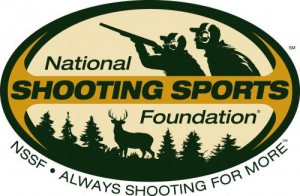Firearms Industry Maintains Ban on Traditional Ammunition Is Wrong Following CA. Condor Report

NEWTOWN, Conn. — -(AmmoLand.com)- A report issued yesterday by the California Fish & Game Commission on blood lead levels in California condors is inconclusive and supports the National Shooting Sports Foundation’s contention that there is no scientific basis for the state’s ban on hunters using traditional ammunition in condor regions.
“The problem all along with linking the use of traditional ammunition and the health of the California condor has been lack of conclusive scientific evidence that justifies banning ammunition containing lead components,” said Steve Sanetti, president and CEO of NSSF, trade association for the firearms and ammunition industry. “This report only serves to support industry’s position that the ban is unwarranted.”
“The report’s data certainly does not justify the commission’s intent to increase the scope of the ban to include upland and small game in the condor region,” added Sanetti. “Expanding the ban will only create another barrier to hunting, reducing funds derived from license fees and tags that support wildlife conservation in the Golden State.”
The firearms and ammunition industry vigorously opposed the effort to ban use of traditional ammunition in condor regions, citing lack of conclusive evidence to support claims that some condors had higher elevated blood lead levels from ingesting ammunition fragments while scavenging entrails from hunter-harvested big game. Nevertheless, Gov. Arnold Schwarzenegger signed the ban into law, which went into effect July 1, 2008.
Then last month the F&G Commission announced its intention to consider expanding the ban to cover small and upland game hunting, a move the F&G Department did not support since condors do not feed on small game and hunters retrieve upland birds from the field. The fact that no scientific evidence exists for condors feeding on small game supports the department’s position.
The report, which the commission approved by unanimous vote, covers the first sampling of blood lead levels in free-flying California condors since the ban went into effect. In its summary, the F&G Department and F&G Commission caution that the data was not “systematically collected” and “thus, the information should not be considered conclusive of any ’cause and effect’ relationship between the prohibition of lead projectiles in condor range and blood lead levels detected in condor.”
The department and commission note that the “sources of lead in sampled condors are unknown, relationship of sampled condors to hunting activity are unknown, and . . . the condor feeding habits for this period . . . are unknown.”
Said Sanetti, “Given all of these caveats, no one should rush to give credence to this report as evidence supporting the state’s ban on traditional ammunition.”
NSSF questions the report’s use of standards for humans as the basis for measuring blood lead levels in condors. The standard “background” blood lead level of 10 micrograms per deciliter (ug/dL) for condors is the same threshold for concern established by the Centers for Disease Control and Prevention for a human child.
“To our knowledge, there is no baseline blood lead level established for condors, or any other species of animal, and it strikes us as arbitrary to use a human threshold for a bird species,” said Lawrence G. Keane, senior vice president and general counsel for NSSF.
Data in the report was derived from blood lead levels sampled during calendar year 2008 and was provided to the F&G Department by the U.S. Fish and Wildlife Service.
Samples were taken from 72 free-flying condors in California in 2008. During the January to June period, 59 percent of condors sampled had blood lead levels considered above background levels (greater than 10 ug/dL), and 45 percent of condors had levels above background during July to December of 2008.
The data, said the F&G Department and Commission, is considered inadequate for “any in-depth or meaningful comparative analyses regarding the possible consequences of the ‘2008 lead ammo ban’ in condor range. However, the department and commission conclude that the data provides a basis for future comparison. Beginning in fall 2009, a more comprehensive data collection plan is expected to be in place.
The commission’s intent to expand the ban is in response to a lawsuit settlement between the state and plaintiffs the Natural Resources Defense Council and Center for Biological Diversity that stipulates the commission will consider amending regulations requiring alternative ammunition for taking small and upland game within the condor range.
For more information about traditional ammunition and how it relates to the California condor, see https://www.nssf.org/media/FactSheets/Lead_Ammunition.cfm.
About:
NSSF, founded in 1961, is the trade association for the firearms, ammunition and recreational shooting sports industry. It promotes the safe ownership and responsible use of products its members make and sell. For more information, visit www.nssf.org
